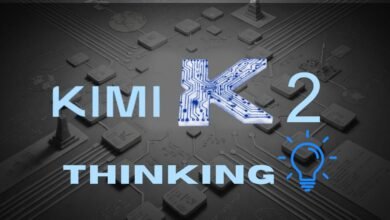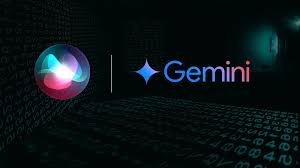China’s Free AI Model Outperforms GPT-5 and Sonnet 4.5

▼ Summary
– Moonshot released its open-source Kimi K2 Thinking model, claiming it outperforms GPT-5 and Sonnet 4.5 on certain benchmarks.
– The model features long-horizon planning, adaptive reasoning, and tool use, trained with about 1 trillion parameters and available on Hugging Face.
– It was trained for only $4.6 million, a fraction of the cost of leading U.S. AI models, challenging the high-spending proprietary AI approach.
– Businesses may reconsider paying for proprietary AI tools as free, high-performing open-source models like Kimi K2 become available.
– The rise of Chinese open-source AI models intensifies the global AI competition, raising questions about investment strategies and potential market bubbles.
A new open-source artificial intelligence model from China is making bold claims that could reshape the competitive landscape of the global AI industry. Moonshot, a Beijing-based AI lab, has launched its Kimi K2 Thinking model, asserting it surpasses leading proprietary systems like OpenAI’s GPT-5 and Anthropic’s Claude Sonnet 4.5 on several critical benchmarks. These include Humanity’s Last Exam, BrowseComp, which evaluates an AI agent’s skill at locating obscure information online, and Seal-0, a test focused on reasoning ability. For coding tasks, the model reportedly matches the performance of its American rivals, though it doesn’t significantly exceed them.
Moonshot describes Kimi K2 Thinking as a Mixture-of-Experts architecture that integrates long-term planning, adaptive reasoning, and the ability to use online tools such as web browsers. According to the company, the model works by “continually generating and refining hypotheses, verifying evidence, and constructing coherent answers.” This approach allows it to break down complex, open-ended problems into smaller, manageable steps. The system was trained using roughly one trillion parameters and is available for developers to download and use freely on Hugging Face.
Perhaps the most disruptive aspect is that Kimi K2 Thinking is completely free and open source. Developers can access the underlying code and model weights at no cost. Even more striking is the reported training expense, just $4.6 million, a fraction of the billions spent by major U.S. AI firms. If these performance and cost claims are independently verified, the implications for the AI market could be profound, though some observers recall the similar hype around DeepSeek’s R1 model earlier in 2025, which eventually subsided.
For businesses, the arrival of such a capable free model challenges the prevailing sales narrative from Silicon Valley. Since ChatGPT’s debut, companies have faced intense pressure to adopt paid AI solutions, often under the threat that competitors using AI would gain an unassailable advantage. Enterprise subscriptions to services like ChatGPT for Enterprise have become commonplace, despite many organizations struggling to demonstrate a clear return on investment.
Now, with Moonshot’s release, the logic behind those expensive proprietary contracts faces serious scrutiny. Businesses suddenly have access to a free alternative that supposedly handles critical agentic tasks more effectively than the leading paid options. While it’s unlikely that companies will immediately abandon their existing AI vendors, the availability of a high-performing open-source model will undoubtedly make decision-makers reconsider their long-term AI strategy.
In fact, some U.S. firms, including Airbnb, are already opting for AI tools from Chinese developers, citing both superior performance on specific tasks and significantly lower costs. At the same time, security concerns have been raised about using open-source models, especially those developed abroad. Several U.S. agencies and other governments moved quickly to ban DeepSeek earlier this year, highlighting the ongoing tension between performance gains and potential risks.
The competitive dynamics between the U.S. and China in artificial intelligence continue to intensify. If DeepSeek’s R1 was China’s “Sputnik moment,” then Kimi K2 Thinking represents a substantial leap forward, a symbolic moon landing in the AI domain. American commentators often frame this competition in ideological terms, contrasting “American AI,” associated with liberal democratic values, against “Chinese AI,” seen as reflecting state-directed censorship and control.
It’s accurate that some AI models developed in China display biases and content restrictions aligned with official policies. Still, it’s essential to recognize that all AI systems carry inherent biases shaped by their training data and the perspectives of their creators. The tools you use inevitably reflect the worldview of those who built them.
Financial considerations, however, may ultimately outweigh ideological debates. If Kimi K2 Thinking delivers on its promised benchmarks, its minimal $4.6 million training cost becomes impossible for investors to ignore. In the United States, the prevailing belief has been that developing top-tier AI requires colossal financial investment, often tens of billions of dollars, even for companies that are not yet profitable.
This narrative has propelled valuations of firms like OpenAI and Anthropic into the hundreds of billions. Yet concerns are mounting about a potential AI bubble, a scenario where a substantial part of the global economy becomes dependent on a technology that fails to generate sustainable profits, risking a collapse reminiscent of the 2008 financial crisis.
Whether we are in an AI bubble remains to be seen. What is certain is that the emergence of a free, high-performing model like Kimi K2 Thinking will give many technology investors pause. They may start questioning whether their capital is backing the right players in this rapidly evolving field.
(Source: ZDNET)





